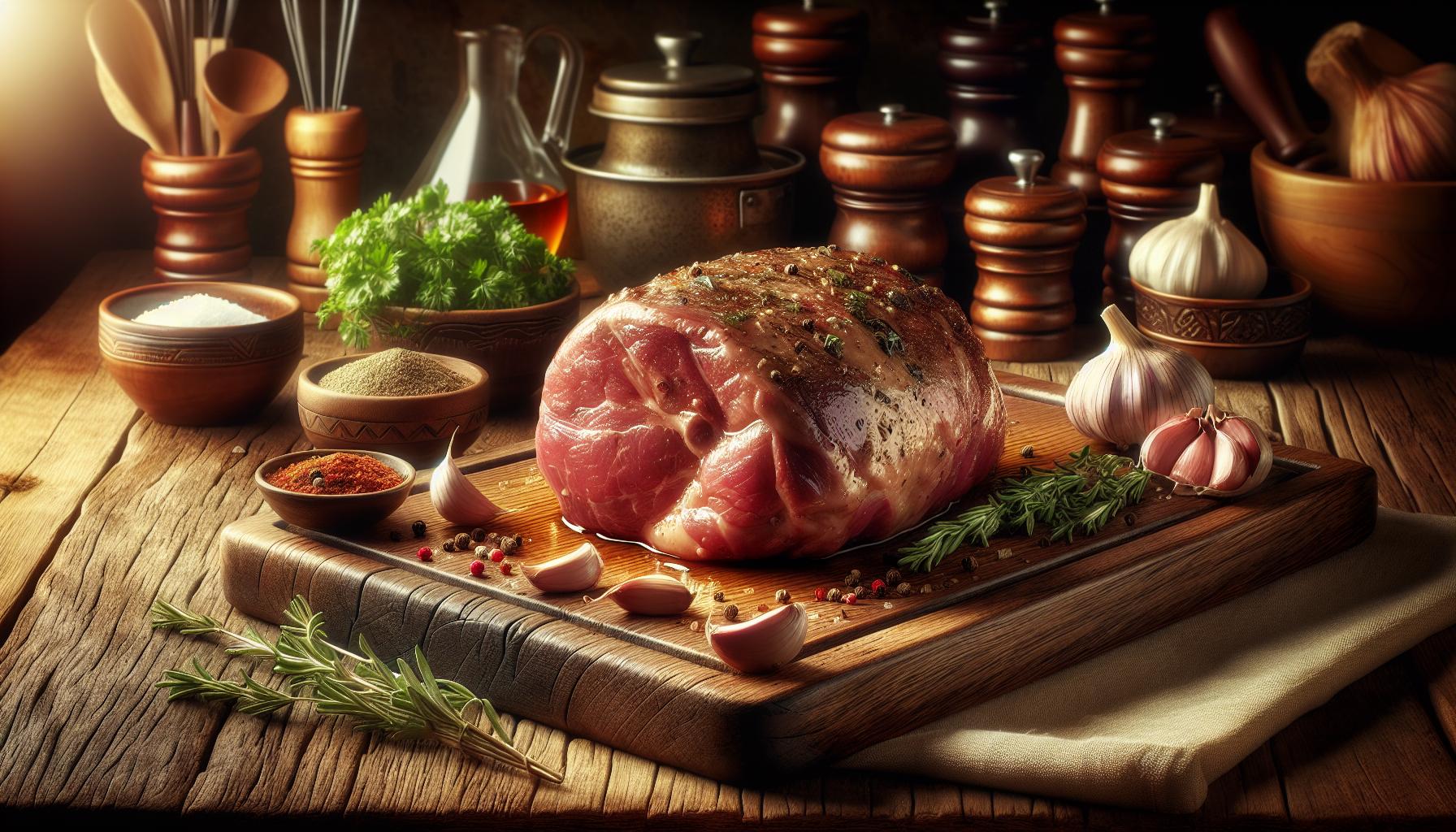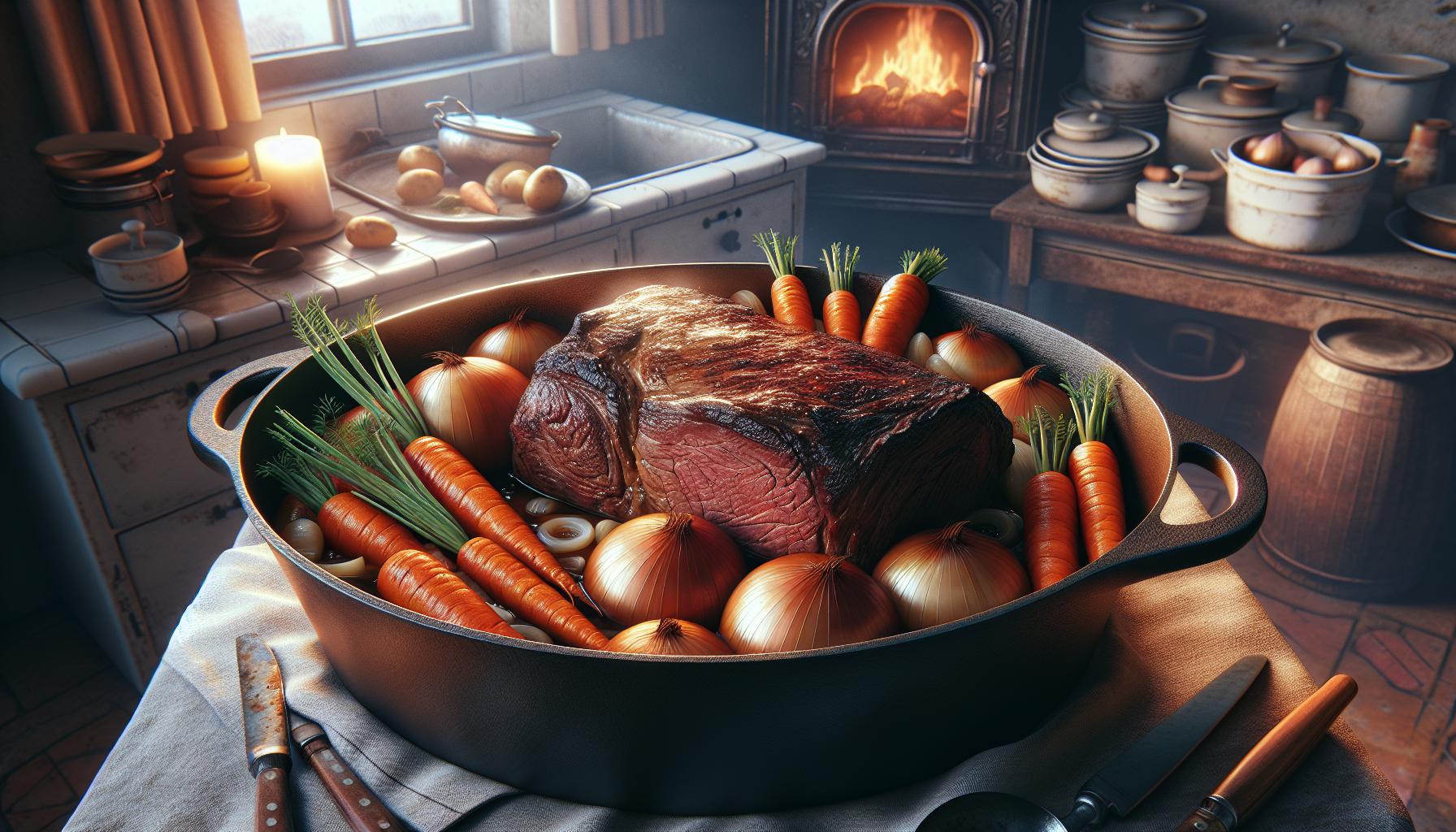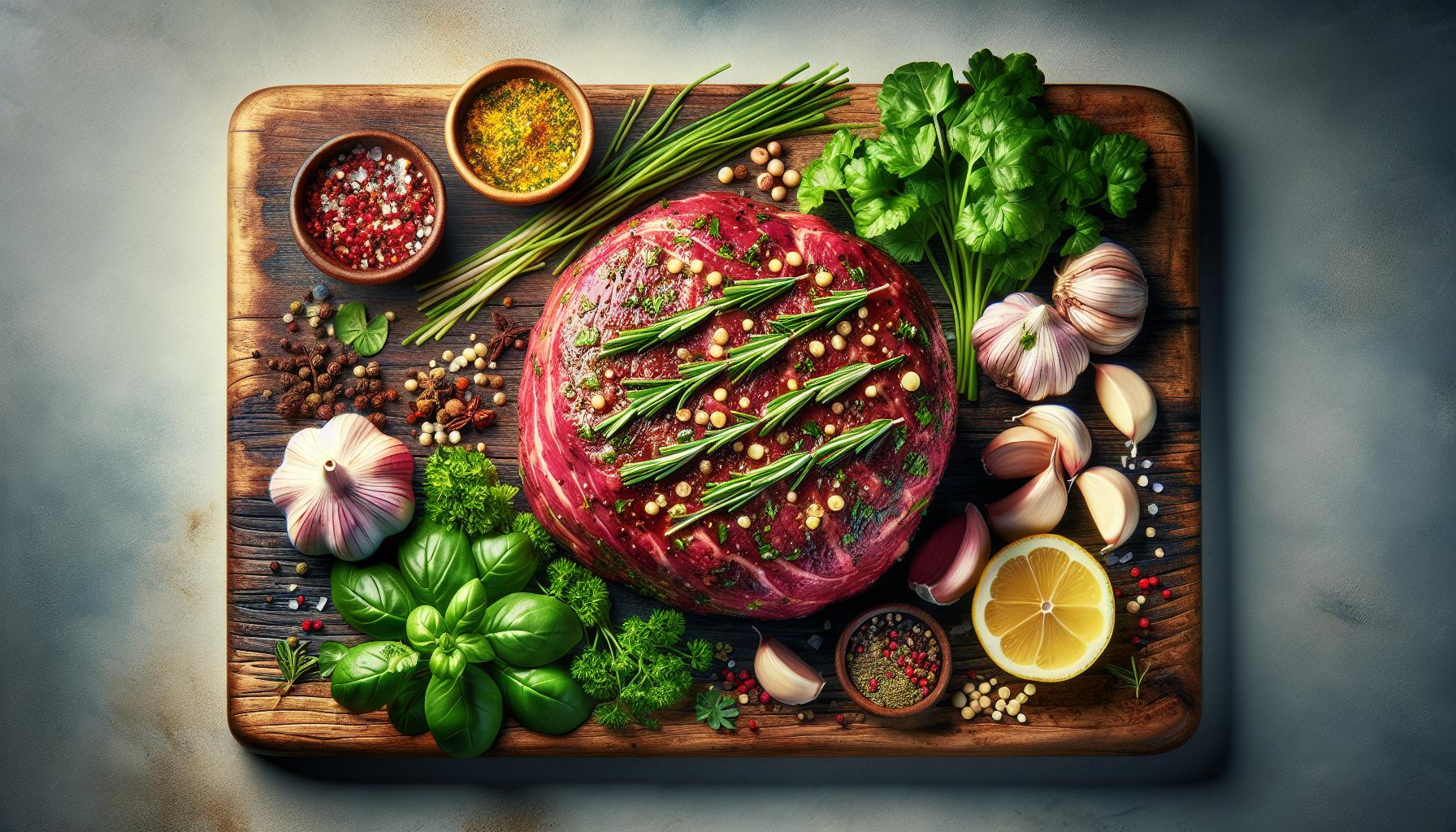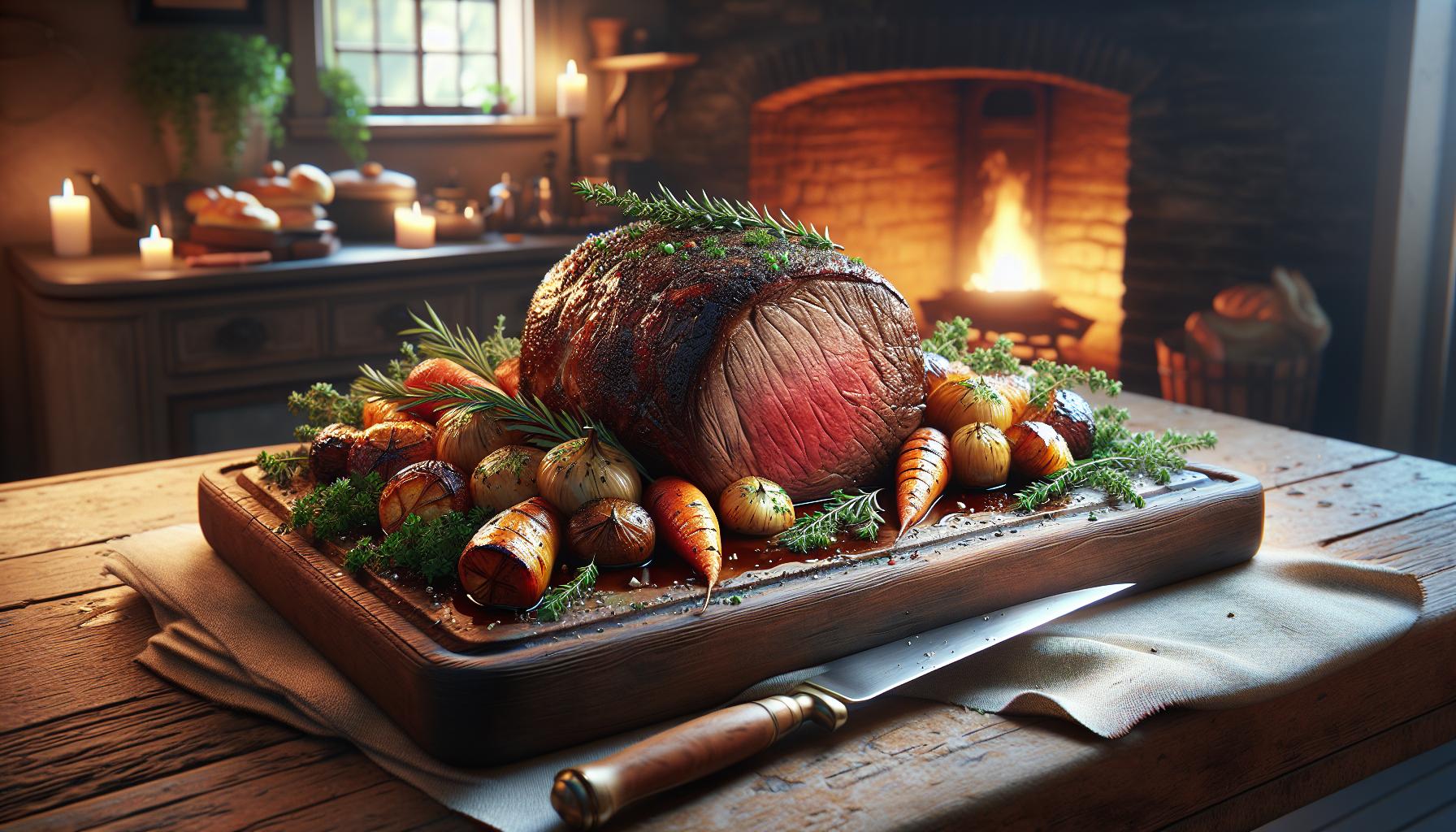Bottom round roast often gets a bad rap for being tough and boring but it’s actually a hidden gem in the beef world. When cooked properly this budget-friendly cut transforms into a mouthwatering masterpiece that’ll have everyone asking for seconds. Plus it’s lean and packed with protein making it a smart choice for health-conscious meat lovers.
Getting the most flavor from bottom round roast isn’t rocket science – it just needs a little TLC and the right cooking technique. Whether it’s slow-roasted to perfection braised in rich gravy or sliced thin for sandwiches this versatile cut can handle it all. The secret lies in understanding how to coax out its natural flavors while keeping the meat tender and juicy.
Recipes For Bottom Round Roast
Bottom round roast comes from the rear leg of the cow, specifically the outside muscle of the upper leg. This cut features lean meat with minimal marbling, offering a balance of flavor and nutritional value at an economical price point.
Best Cuts and Selection Tips
The optimal bottom round roast displays a deep red color with minimal fat marbling throughout the meat. Look for cuts weighing between 2.5 to 4 pounds for consistent cooking results. Select pieces with:
- Bright cherry-red coloring indicating freshness
- Firm texture when pressed gently
- Uniform thickness across the roast
- Small flecks of white fat distributed evenly
- Clear vacuum packaging without excess liquid
Quality bottom round roasts feature fine-grained muscle fibers running in a single direction. The meat exhibits minimal external fat while maintaining enough intramuscular fat to enhance flavor. Premium cuts sport USDA Choice or Select grades, providing the ideal combination of quality and value.
| Selection Criteria | Ideal Characteristics |
|---|---|
| Color | Deep red to cherry-red |
| Weight Range | 2.5-4 pounds |
| Fat Content | 5-10% marbling |
| Texture | Firm, fine-grained |
| Grade | USDA Choice or Select |
Essential Preparation Methods

Bottom round roast preparation combines specific techniques for optimal tenderness and flavor. The following methods transform this lean cut into a delicious meal.
Marinating and Seasoning
Bottom round roast benefits from a 12-24 hour marinade to enhance tenderness. A basic marinade includes 1/2 cup oil, 1/4 cup acid (vinegar, citrus juice), 3 tablespoons aromatics (garlic, herbs) plus 2 teaspoons each of salt and black pepper. Dry rub alternatives feature combinations of kosher salt, ground black pepper, paprika, garlic powder, onion powder at 1 tablespoon each. Liquid marinades penetrate up to 1/4 inch into the meat’s surface, while dry rubs create a flavorful crust. Salt-based seasonings applied 40 minutes before cooking allow proper protein modification for enhanced moisture retention.
Proper Temperature Guidelines
Internal temperature monitoring ensures optimal doneness levels for bottom round roast. Rare meat registers at 125°F (52°C), medium-rare at 135°F (57°C), medium at 145°F (63°C). The roast continues cooking during a 15-minute rest period, increasing internal temperature by 5-10°F. A digital meat thermometer inserted into the thickest part provides accurate readings. Cooking temperature remains steady at 325°F (163°C) for traditional roasting methods. Slow cooking methods utilize lower temperatures of 250°F (121°C) for 8-10 hours. Room temperature resting for 30-45 minutes before cooking promotes even heat distribution.
Classic Bottom Round Roast Recipes

Classic bottom round roast recipes transform this economical cut into flavorful meals through time-tested cooking methods. These traditional preparations focus on low-temperature cooking to maximize tenderness.
Traditional Pot Roast
Traditional pot roast elevates bottom round roast through braising in aromatic liquid. A 3-pound roast browns for 8 minutes on each side in heated oil over medium-high heat. Onions, carrots, celery, garlic cloves, beef broth, red wine, bay leaves, thyme, rosemary create the braising liquid. The roast simmers at 325°F for 2.5 to 3 hours in a Dutch oven until fork-tender. Root vegetables like potatoes, carrots, parsnips add heartiness during the final hour of cooking. The resulting gravy forms from the concentrated cooking liquid mixed with cornstarch.
Slow Cooker Bottom Round
Slow cooker preparation delivers tender bottom round roast with minimal effort. The meat rests on a bed of quartered onions, carrots, mushrooms in a 6-quart slow cooker. A mixture of beef broth, Worcestershire sauce, tomato paste, garlic creates the cooking liquid. Seasonings include paprika, thyme, black pepper, kosher salt. The roast cooks on low for 8 hours until reaching an internal temperature of 205°F. The accumulated juices transform into rich gravy using cornstarch slurry. This method produces meat tender enough to shred with two forks.
Creative Cooking Variations

Bottom round roast adapts well to diverse global flavors through specific cooking techniques and seasoning combinations. These international preparations transform this economical cut into distinctive dishes that expand its culinary potential.
Asian-Inspired Bottom Round
Korean-style bottom round features a marinade of soy sauce, sesame oil, ginger, garlic, brown sugar and Asian pear. The meat marinates for 4-8 hours before cooking at 275°F until it reaches an internal temperature of 135°F. Chinese five-spice powder creates an aromatic crust when combined with salt and black pepper. Japanese-inspired preparations incorporate mirin, sake and dashi in the cooking liquid, producing tender slices ideal for rice bowls or noodle dishes. A Vietnamese approach uses lemongrass, fish sauce, shallots and chili to create bright flavors that complement the lean meat.
Mediterranean Style Roast
Mediterranean preparations incorporate olive oil, fresh herbs, citrus and garlic to enhance the roast’s natural flavors. A Greek-style marinade combines oregano, lemon juice, olive oil and garlic paste for 6-8 hours before roasting. Italian preparations feature rosemary, thyme, sage and fennel seeds pressed into the surface before slow roasting at 250°F. Spanish influence brings smoked paprika, garlic and white wine to create a flavorful braising liquid. The roast cooks until fork-tender, typically 2-3 hours, producing meat that pairs perfectly with roasted vegetables and Mediterranean sides.
Tips for Tender Results
Bottom round roast requires specific techniques to achieve optimal tenderness. These methods focus on proper handling before during and after cooking.
Resting and Slicing Techniques
A properly rested bottom round roast retains more juices during slicing. Letting the roast rest for 15 minutes under loose foil allows the internal temperature to stabilize distributing moisture throughout the meat. Slicing against the grain breaks down muscle fibers creating tender bite sized portions. The optimal thickness for slices ranges from 1/4 to 1/2 inch depending on serving style. A sharp carving knife produces clean cuts without tearing or shredding the meat. Arranging slices in a single layer prevents them from sticking together allowing the meat to maintain its texture. Room temperature roasts slice more evenly than cold ones straight from the refrigerator. Collection of meat juices during resting adds flavor when drizzled over the final plated slices.
| Resting Guidelines | Time/Temperature |
|---|---|
| Minimum Rest Time | 15 minutes |
| Ideal Rest Time | 20-30 minutes |
| Final Internal Temp | 5-10°F higher |
| Slicing Thickness | 1/4 – 1/2 inch |
Best Side Dish Pairings
Bottom round roast pairs exceptionally with roasted root vegetables like carrots parsnips turnips.
Classic accompaniments complement the roast’s rich flavors:
- Garlic mashed potatoes with cream
- Roasted Brussels sprouts with balsamic glaze
- Honey glazed carrots
- Sautéed mushrooms in herbs
- Green beans almondine
Starch options balance the lean meat:
- Buttered egg noodles
- Wild rice pilaf
- Creamy polenta
- Roasted fingerling potatoes
- Pearl couscous
Fresh vegetable sides add color texture:
- Grilled asparagus spears
- Roasted bell pepper medley
- Braised red cabbage
- Sautéed spinach with garlic
- Mixed green salad
Sauce pairings enhance the roast’s flavor:
- Red wine reduction
- Mushroom gravy
- Horseradish cream
- Herb infused au jus
- Caramelized onion sauce
| Side Dish Type | Cooking Time | Temperature |
|---|---|---|
| Root vegetables | 45 minutes | 400°F |
| Green vegetables | 15 minutes | 375°F |
| Starches | 25 minutes | 350°F |
| Fresh salads | No cooking | Served cold |
Each side dish maintains its distinct flavor while complementing the roast’s savory profile. Fresh herbs garnish both the roast sides enhance presentation appeal.
Bottom round roast stands out as a versatile and economical cut of beef that rewards proper preparation with delicious results. Through carefully selected cooking techniques marinating methods and international flavor profiles this humble cut can become the star of any meal.
Whether braised slow-cooked or roasted the key lies in patient cooking and precise temperature control. By following these tried-and-true methods and pairing the roast with complementary sides home cooks can create restaurant-worthy dishes that won’t strain their budget.
The possibilities for transforming bottom round roast into memorable meals are endless. With the right techniques and a bit of creativity this affordable cut proves that exceptional cooking doesn’t require premium cuts of meat.

